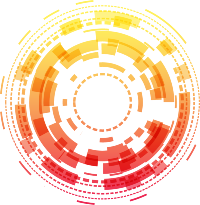In a rapidly evolving digital landscape, platforms traditionally associated with entertainment are increasingly recognized for their educational value — and YouTube exemplifies this shift. The recent findings from the platform’s own research reveal a profound truth: younger audiences are leveraging YouTube not just for fun, but as a vital learning resource. Over 70% of teenagers surveyed across Europe use YouTube to acquire new knowledge outside the classroom, a testament to its growing importance in education. This data challenges the stereotype of YouTube solely as a source of entertainment, positioning it instead as a powerful tool capable of supplementing and even reshaping formal education.
This evolution prompts a critical reflection: Should platforms like YouTube be viewed primarily through the lens of regulation or as partners in learning? The evidence suggests that dismissing the platform’s educational potential ignores a significant segment of youth engagement that could positively influence future generations’ skills and knowledge. Its accessibility, vast range of content, and user-friendly interface make YouTube inherently suited to modern educational needs, especially as traditional systems struggle to keep pace with digital transformation.
The Educational Shift and Its Implications for Society
What makes YouTube’s educational utility distinct is the level of engagement it fosters. Content creators are tailoring videos specifically for learning, covering subjects from mathematics to music, and often presenting information in engaging, relatable formats. Teachers are increasingly incorporating YouTube into lesson plans, recognizing its capacity to simplify complex topics and energize students. A striking 84% of teachers across multiple EU countries incorporate YouTube videos into their classrooms, highlighting its growing acceptance in formal education systems.
Meanwhile, parents also acknowledge the platform’s benefits, with 80% believing that YouTube offers quality content suitable for children’s learning and entertainment. This collective trust underscores an important societal shift: digital platforms, if used responsibly, can serve as effective educational supplements that foster curiosity and motivation among youth. This is especially relevant in contexts where access to quality educational resources remains unequal or limited. YouTube’s vast ecosystem has the potential to democratize learning by providing free, accessible, and diverse educational content worldwide.
Challenges and Opportunities in the Face of Regulation
However, the expanding educational role of YouTube comes at a complex political and regulatory crossroads. Several nations, including Australia, France, and others across Europe, are contemplating or implementing restrictions on social media access for minors. These measures aim to safeguard youth from potential harms associated with unregulated online environments. Australia’s recent decision to extend social media restrictions to users under 16 exemplifies this trend.
For YouTube, these regulatory shifts present a double-edged sword. On one hand, these restrictions threaten to limit young users’ access to a platform that offers significant educational benefits. On the other hand, they serve as a catalyst for the platform to refine its content moderation and demonstrate its value as a responsible educational tool. YouTube is increasingly emphasizing its role as an ally in learning, offering curated content and parental controls that could mitigate concerns over unrestricted access.
Nevertheless, regulatory bodies seem to prioritize safety over potential educational gains. It remains uncertain whether platforms like YouTube can effectively advocate for their educational capabilities within these constraints. To withstand these challenges, YouTube must evolve from being perceived as merely an entertainment hub to a credible, trusted partner in youth education—highlighting measurable benefits while addressing safety concerns. Failure to do so might not only diminish access but could also have long-term implications for the way digital content impacts youth development.
The conversation surrounding YouTube’s role in education is more than a regulatory debate—it reflects a fundamental shift in how society perceives digital learning platforms. As the platform continues to demonstrate its capacity to enhance educational outcomes through user engagement and creative content, it takes on increasing responsibility. The challenge lies in convincing regulators that the benefits outweigh the risks and that, with proper safeguards, YouTube can be a force for good.
In this new era, the platform’s ability to adapt and advocate for its educational potential could define its future. If YouTube succeeds in emphasizing its contributions to learning and safety, it may continue to serve as a vital resource rather than become a casualty of regulatory restraints. Ultimately, harnessing the platform’s educational power is not just about avoiding restrictions; it’s about realizing a unique opportunity to elevate youth learning in a digital age.

